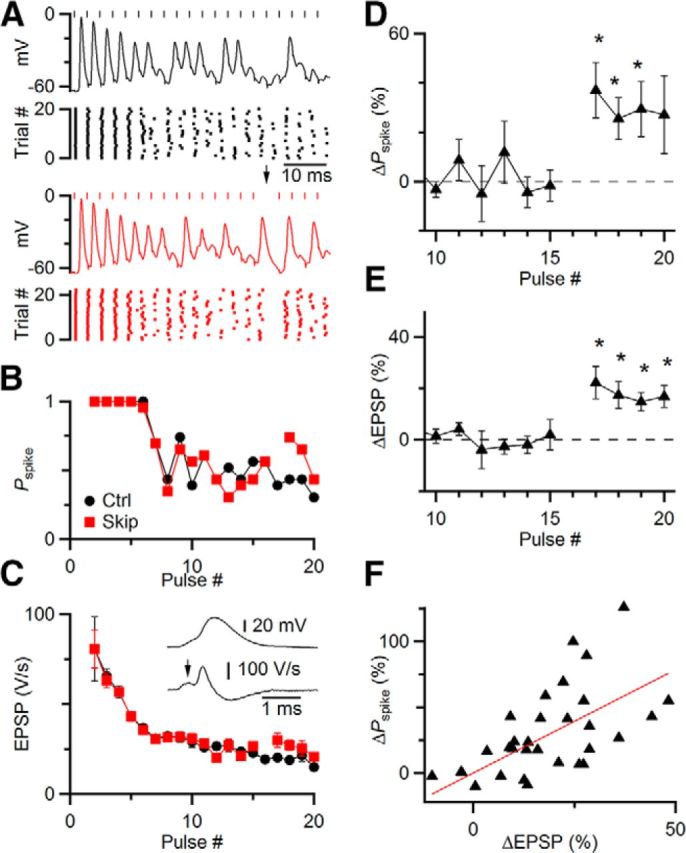Figure 7.

Skipping stimuli has functional consequences, increasing the probability of spiking (Pspike). A–C, Representative current-clamp experiment. A single endbulb was stimulated at 333 Hz in regular trains in the presence of 5 μm CPP, in control (A, top) and with one skipped stimulus (A, bottom). Rasters show spike timing over many trials. Pspike (B) and EPSP amplitude (C) declined over the train but increased immediately after the skipped stimulus. C, Inset, Method of estimating EPSP amplitude from the derivative of membrane potential. D–F, Average results from 8 similar experiments, showing a significant increase in Pspike and EPSP amplitude following a skipped stimulus. Asterisks indicate significant increases in D and E (p < 0.05). F, The increase in Pspike was strongly correlated with the increase in EPSP for the 4 pulses following the skipped stimulus in 8 experiments (r = 0.42).
